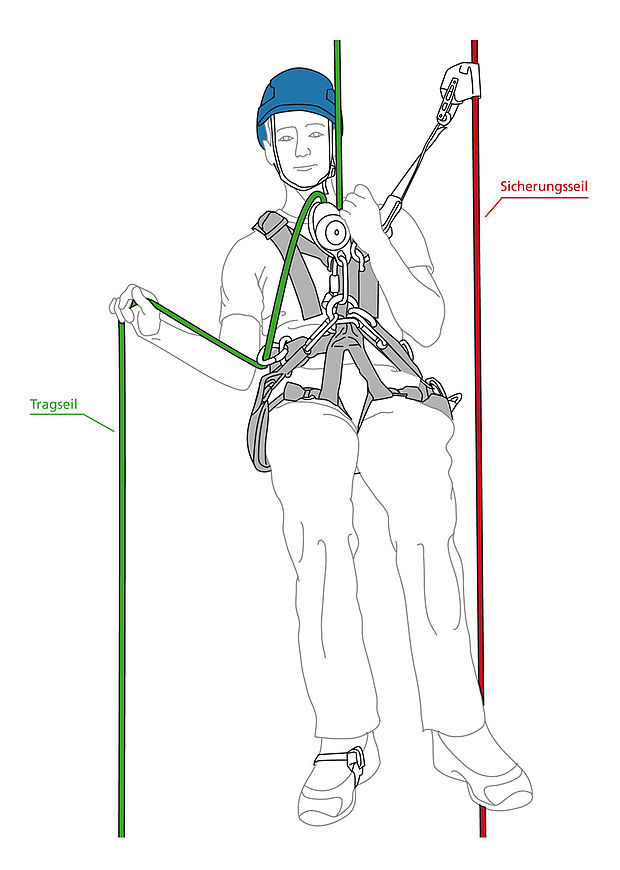Rope Access Systems

Rope access is a safe method to reach workplaces in heights or depths, e.g., on high rise buildings, power plants or wind turbines. The variety of work tasks, rope access technicians carry out is immense, from maintenance and cleaning to NDT, inspections and complex installations. Major advantages, when compared with other access methods is the minimal impact on the surrounding areas and the short set-up times, reducing the duration of persons at risk.
Main objective of rope access is safety at work, achieved through a redundant system. Technicians always use a working line for access and a safety line as backup in case the working line fails.
To learn how to use the system of work properly and how to rescue colleagues in case of an emergency, every rope access technician has to go through a specific training and finally pass an independent assessment.
Before work commences, a rope access supervisor visits the site, plans the operation and prepares a risk assessment.
Rules and Regulations
Directive 2009/104/EC of the European Parliament and of the Council, dated September 16th, 2009, provides the legal basis for rope access in Europe. The directive has been transposed into national law in all member states.
In Germany there is a series of national rules, regulations and recommendations regarding rope access. Please see our Information about FISAT Assessments in English for details.
The ISO Standard 22846 “Rope Access Systems” describes fundamental principles for a system of work as well as a code of practice on an internationally agreed basis.

